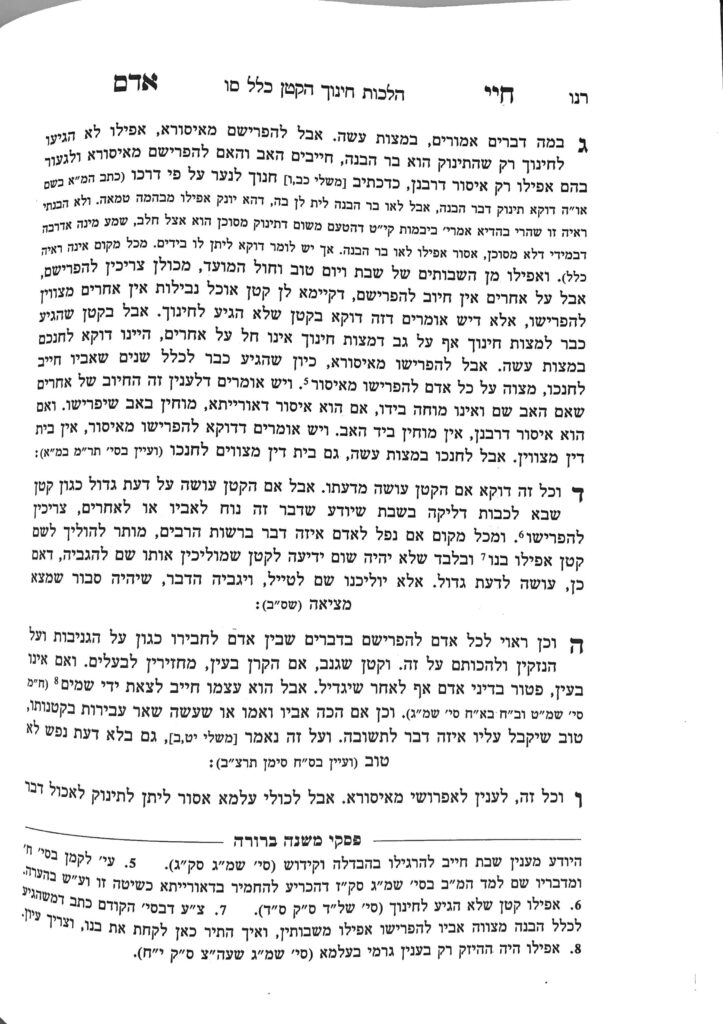We are beginning siman 6, where the Chayei Adam discusses sefiya b’yadayim, actively feeding or enabling issur. There is a machlokes rishonim whether sefiya is an issur deoraysa or derabanan. There are three places in the Torah which explicitly forbid sefiya to a katan. However, the fact that it is mentioned three times leads to the concept of shelosha kesuvim ha’baim k’echad ein melamdin, that if the Torah repeated itself in three places, it teaches us that the concept only applies in those cases and cannot be broadly applied. If Hashem wanted us to apply the concept broadly, He would have written it only once, and we would have extrapolated to all other cases. The fact that it is repeated demonstrates that the concept is limited to those specific cases.
However, there is an exception to this concept. If each of the places where the concept is written could not have been derived from each other (because each had a uniqueness that set it apart from other cases), it is not considered shelosha kesuvim ha’baim k’echad, because each is required. When that is the case, we can broadly apply the concept. The machlokes rishonim regarding sefiya centers around whether we understand these three pesukim as limiting each other, or whether each source has a uniqueness which allows for the concept to be broadly applied.
The Chayei Adam writes that, although we have seen differing opinions and caveats regarding the chiyuvim of a katan regarding mitzvos asei and lo saasei, everyone agrees that sefiya b’yadayim on something assur mideoraysa, or to tell a child to do an action which is assur mideoraysa, is assur. The Chayei Adam is of the opinion that this issur itself is deoraysa; meaning, we extrapolate from the cases above to all scenarios. The gedolei haposkim understand that we learn from these pesukim that there is an issur deoraysa to feed a child issur in all circumstances, whether to actively feed the issur to the child or to actively tell a child to eat the issur or transgress it.
One of the sources for the issur sefiya is a pasuk regarding sheratzim, where it says multiple times lo sochlum, not to eat them. Chazal understand that one of the phrases should be understood as lo saachilum, do not feed them [to others]. Another source in the Torah is regarding consuming blood, where the Torah says lo sochlu al hadam, and Chazal understand that the phrase should be understood as lo saachilum. The third source is regarding tumas kohanim, where the Torah says emor…ve’amarta, which Chazal understand means to educate the katanim regarding these halachos. In these three cases, even if one understands the issur of sefiya in general as derabanan (not in accordance with the Chayei Adam), these specific cases would be deoraysa according to all.
Summary
The Chayei Adam understands that sefiya b’yadayim to a katan on anything assur mideoraysa, or to tell a child to do any action which is assur mideoraysa, is an issur deoraysa.




